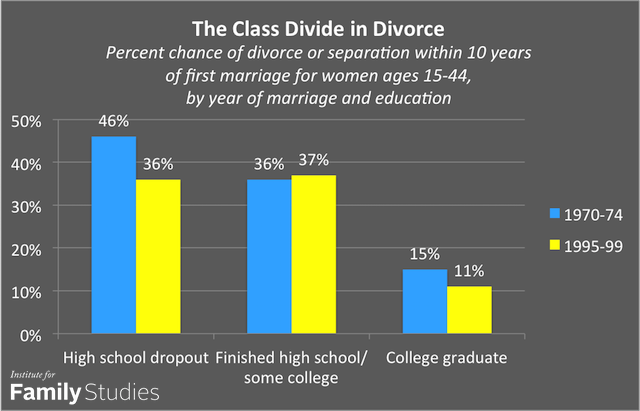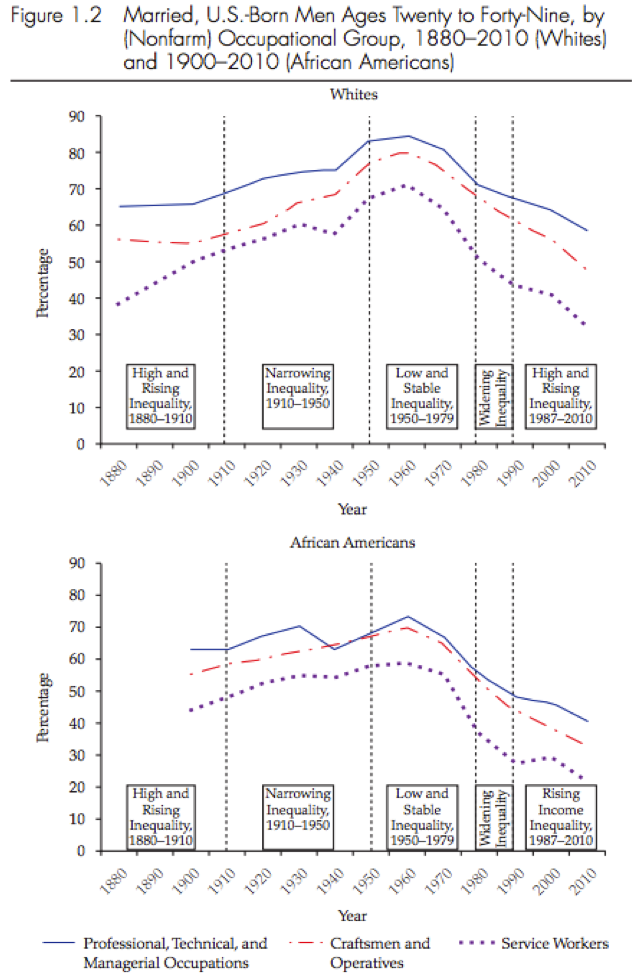“In a word,” writes sociologist W. Bradford Wilcox and Anna Sutherland,
the increasingly “separate and unequal” character of family life in the United States is fueling economic, racial, and gender inequality. How is family life “separate and unequal”? First, Americans exhibit a growing class divide in marriage where the college-educated are more likely to enjoy high-quality, stable marriages than the less-educated. For instance, since the divorce revolution of the 1970s, divorce has fallen among college-educated Americans, while remaining comparatively common among Americans without college degrees.
Furthermore, the timing of these trends provides “strong evidence that family change preceded growing economic inequality. Specifically, the rise of nonmarital childbearing and divorce date back to the 1960s, well before economic inequality began growing in the late 1970s.”
The authors find that “scholarly research demonstrates that America’s growing marriage divide has helped to fuel three forms of economic and social inequality”:
- “First and foremost is inequality in Americans’ family income, which has risen since the 1970s.”
- “The retreat from marriage also looms large in another form of economic inequality in America: racial inequality.”
- “Third, the growing marriage divide is fueling a historically unusual type of gender inequality in low-income communities…”
There’s much more. The research is both compelling and important. Check out the full post.

